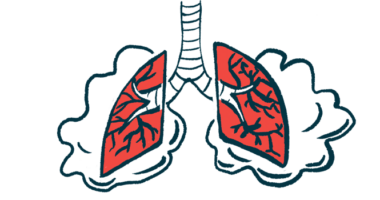Bacteria Adapted to the Lungs Easier to Kill With Antibiotics, Study Finds

The adaptation of bacteria Pseudomonas aeruginosa to the lungs of cystic fibrosis (CF) patients may make them more susceptible to antibiotics and easier to kill, according to new research.
The study with that finding, “Evolutionary trade-offs associated with loss of PmrB function in host-adapted Pseudomonas aeruginosa,” was published in the journal Nature Communications.
Antibiotic resistance occurs when bacteria change to survive exposure to these medications. Antibiotic-resistant bacteria are harder to treat. Increased medical costs, prolonged hospital stays, and higher mortality are other consequences of this growing public health concern.
P. aeruginosa is a species of bacteria found widely in the environment. It may cause infections in animals and humans, particularly in individuals with weakened defenses, which makes it an “opportunistic organism.” P. aeruginosa is the major cause of lung infections in CF, and the most important agent in progressive and severe lung disease.
In a collaboration between The University of Liverpool and the University of Salford, scientists tried to clarify how P. aeruginosa adapts to the lungs and whether this process affected its resistance to antibiotics.
Using models of chronic respiratory infection, investigators discovered mutations in the bacterial DNA that appeared during infection and changed P. aeruginosa’s ability to survive in the lungs.
These mutations, specifically in the pmrB gene, enabled the bacteria to attach more effectively to lung cells, and to resist defense molecules produced by the host immune system, like lysozyme (an antimicrobial enzyme). However, these same mutations also made P. aeruginosa more susceptible to antibiotics; they led to reduced production of proteins involved in antimicrobial resistance.
“The mutations we identified in Pseudomonas in this study were important in allowing the bacteria to resist an anti-bacterial enzyme of the host immune system called lysozyme. What surprised us was that this adaptation came at a cost, in that bacteria carrying the mutation were very readily killed by antibiotics,” Daniel Neill, the study’s senior author, said in a press release.
Ian Goodhead, a co-author of the study, added: “In the case of cystic fibrosis, it’s clear that bacteria have a choice: survive in the lungs, or defend themselves against antibiotics. By adapting to the former, they become more susceptible to the latter, so there is a cost to the bacteria of being resistant.”
Joanne Fothergill, also a study co-author, noted that bacterial infections in the lungs are characterized by complex populations of microbes. “Not every Pseudomonas aeruginosa is the same, not even within a single patient. We now need to understand whether the antibiotic-susceptible mutants we identified are protected during infection by living as part of a community alongside more resistant strains,” she said.
Overall, the researchers hope these results may lead to improved diagnosis and treatment of P. aeruginosa infection in CF patients.
“The evolutionary trade-off associated with pmrB mutation, whereby increased in vivo fitness is partially offset by antibiotic susceptibility, may offer opportunity for intervention with intensive eradication therapy in early infection,” they wrote.
“We found that these mutations appear early in infection and may originate in Pseudomonas aeruginosa living in the nose and sinuses,” said Aras Kadioglu, another study co-author. “It may be possible to identify infection at an early stage by taking nose swabs to look for the presence of Pseudomonas.” In case bacteria with pmrB mutations are found, the findings suggest that treating lung infections before they become fully established is possible, Kadioglu said.







